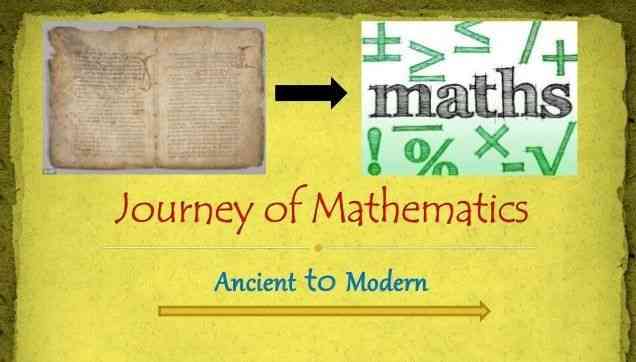The history of mathematics is as old as the existence of human life. Because almost every day of your life, in every work you need mathematics. Mathematics is a relationship between quantity and the things you are doing. Without this relation, your work will not be full-filled entirely.
Mathematics is the fundamental requirement for modern science, engineering, philosophy, chemistry, and almost all complex thinking in the contemporary world. It also involves measurement, calculation, and simple counting. Take the computer as an example. It can calculate a million times faster than you and this happened because we could build the relationship between those hardware and Mathematics. We will now talk about the ages of mathematics and their contribution to mathematics.
We can separate the ages of Mathematics as the following:
- Babylonian mathematics
- Egyptian mathematics
- Greek mathematics
- Roman mathematics
- Indian mathematics
- Islamic Mathematics
- Mathematics in 16th-18th century
Babylonian Mathematics: Sumerian Mathematics initially developed for using it to develop their Agriculture, for measuring their plot of land and taxation. Perhaps they were the first people to assign symbols to a group of objects attempting to make the large amount easier. They moved from using symbol likes wheat, jobs etc. and they started to use a specific symbol to indicate specific numbers.
Learn the history of Electronics

Initially, in the 4th millennium BCE, they started using a small clay cone to represent 1, a clay ball for 10, and a large clay cone for 60. In the 3rd millennium, they replaced those clay cone with cuneiform so that they can express those numbers by writing. Probably the initial model of abacus was also used in Sumeria around 2700-2800 BCE. Their Number system was 60 based/ sexagesimal.

From this number system we got 60 minutes, 60 seconds and another interesting fact is 60 number has 12 divisor (1,2,3,4,5,6,10,12,15,20,30,60) that’s why 12 is a popular historical number(12 month, 12 Inches, 12 Pence, 2x12 Hours).
Consider supporting me by donating here
Egyptian Mathematics: The early Egyptian who built their empire besides of NIEL Valley around 3000 BC, they started to record their seasons for agriculture and religious purposes. In the beginning, they used their body parts (such as finger from elbow = 1 hand) for measuring buildings or lands. It is also thought that Egyptians developed a 10 based Decimal numerical system according to the 10 fingers of two hands around 2700 BCE. Those numbers used as a stroke for 1, a heel-bone for 10, a coil of rope for 100 and a lotus plant for 1000, as well as other hieroglyphic symbols for higher powers of 10 up to 1 Million.
They were able to make improvements in Geometry and Arithmetic. They developed a way of multiplication and division of numbers.

Greek Mathematics: When the Greek empire started to spread their influence on Asia minor, they adopted the knowledge of mathematics of both Babylonians and Egyptians. Soon they began to contribute by their own knowledge into this sector. They had their own Number System named as Attic/ Herodianic Numerical (was developed around 450 BCE). Their number system was also 10 Base similar to the Egyptians.


Many great Philosophers and Mathematicians born in Greek Empire among them Pythagoras, Thales, Plato, Aristotle was famous. Around 6th century BCE, Thales established a theorem known as “Thales Theorem”
If a triangle is drawn within a circle with the long side as a diameter of the circle, then the opposite angle will always be a right angle. [7]


He also created another theorem called “Intercept Theorem.”
Pythagoras was the first who realize that the whole system of mathematics could be constructed with geometry and numbers. “Pythagoras Theorem” is one of the best known and most used theorems in mathematics nowadays. His theorem was
“The area of the square whose side is the hypothenuse The side opposite the right angle) is equal to the sum of the areas of the squares on the other two sides.” [5]
Roman Mathematics: on the half of the 1st century BCE, the Roman Empire overthrew the Greeks, and the mathematical evolution of Greeks stopped. But the roman empire didn’t practice mathematics. Theoretically, they used mathematics for only practical purposes. Roman's numerical system is also well known today, their number is also 10 base (Decimal System).

Because of the difficulty of written arithmetics using Roman numeral notations, calculations were usually performed by abacus, based on earlier Babylonian and Greek “Abaci.”
Learn about Gypsy's here

In my next post, I will write about Indian Mathematics, Islamic Mathematics, 16th-18th Mathematics. Stay tuned.....
Source
[1] https://en.wikipedia.org/wiki/Babylonian_mathematics
[2] https://en.wikipedia.org/wiki/Ancient_Egyptian_mathematics
[3] https://en.wikipedia.org/wiki/Greek_mathematics
[4] https://en.wikipedia.org/wiki/Roman_numerals
[5] https://en.wikipedia.org/wiki/Pythagorean_theorem
[6] https://en.wikipedia.org/wiki/Thales_theorem



